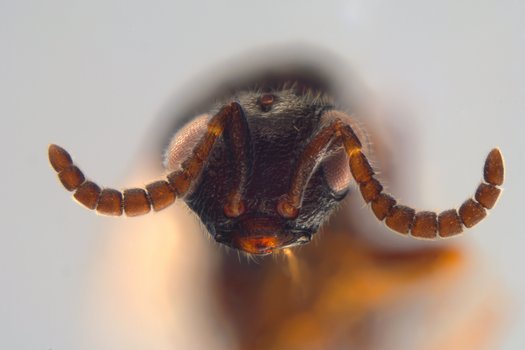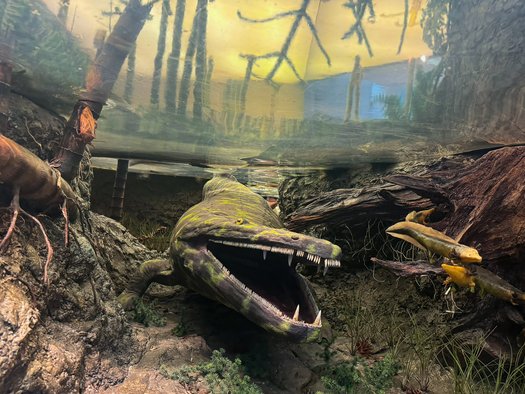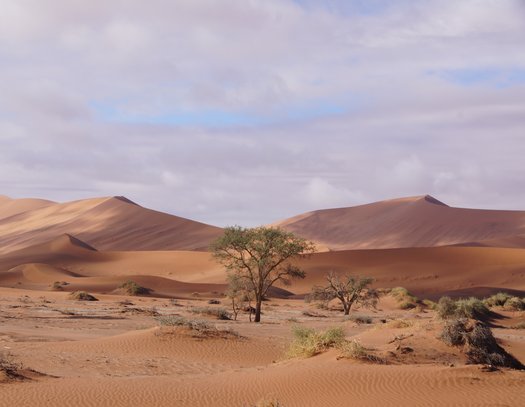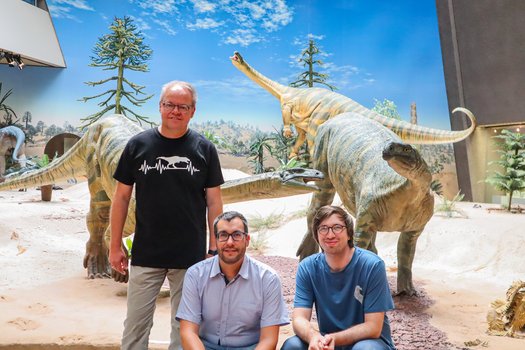Here you can find our current research: brand-new information from botany, entomology, paleontology and zoology. The latest research results are briefly presented here and provide an insight into our work as a research museum. Information about our main research topics can be found on the pages of the respective research departments.

Science News
A wonder fossil – Prehistoric reptile with feather alternative discovered!

Mirasaura grauvogeli (Copyright: Gabriel Ugueto)
Body coverings such as hair and feathers play a central role in evolution. As complex skin appendages, they not only enable warm-bloodedness by forming an insulating body coverage but often serve a range of other functions. Likely developed from the primitive scales of their reptile-like ancestors, such complex skin appendages have until now only been known in mammals, birds, and their closest fossil relatives—dinosaurs and pterosaurs.
An international team led by palaeontologists Dr. Stephan Spiekman and Prof. Dr. Rainer Schoch from the State Museum of Natural History Stuttgart has now described an early Triassic reptile from around 247 million years ago that likely developed another type of complex skin outgrowth, distinct from feathers and hair.









